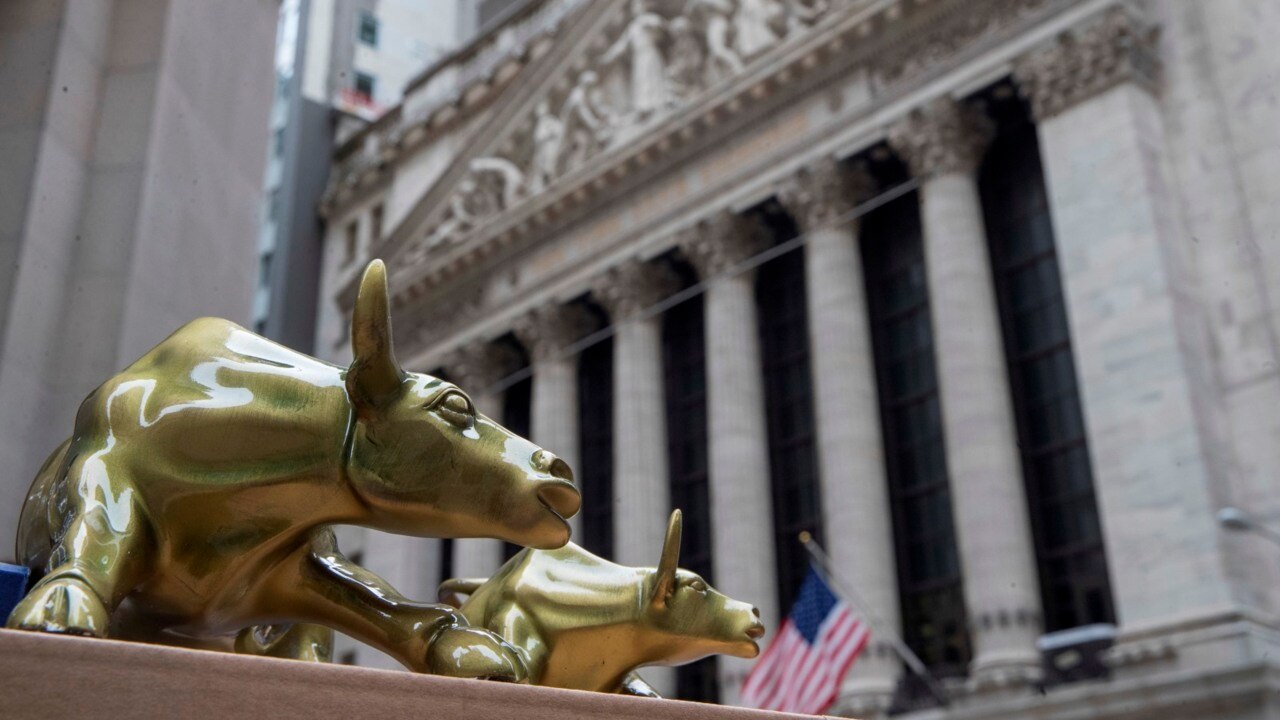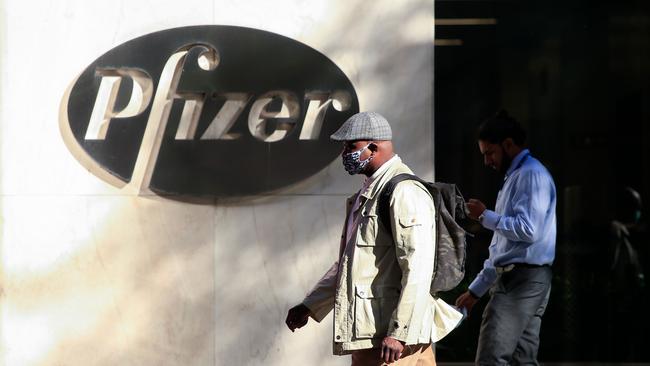Terry McCrann: Why vaccine-induced market surge is premature
Sure, there may well be a coronavirus vaccine in the pipeline, but let’s not get ahead of ourselves. The benefit, at least economically, will take months to play out, writes Terry McCrann.

Business
Don't miss out on the headlines from Business. Followed categories will be added to My News.
Monday’s overnight ‘Godot vaccine’ surge on Wall St was as predictable as it was premature.
Both sides of that played out in Australia through Tuesday, as our market first surged 130 points or 2 per cent, repeating Monday’s surge – only to lose most of it, finishing up just 41 points, into a more sobering open coming up in New York Tuesday night.
Indeed, it had already played that way through that first trading session for the week, Monday, on Wall St.
After Pfizer’s “we’re all saved” announcement – well, that’s to say 90 per cent of us, anyway – the Dow had shot straight up 1500 points from the open. By day’s end the rise had been trimmed to 830 points and some more looked likely to be given up at Tuesday’s open.
The predictable part was what we saw: trillions of dollars in zero-interest cash in full-on FOMO – Fear-of-Missing-Out – mode; waiting fully-primed, with the safety-catch off, to be fired back into the market.
The dynamics I discussed yesterday – the election, the US Fed prepared to do “whatever it takes” – had, to switch metaphors, created the springboard. The cash leapt off it.
But then the premature reality filtered through: even on the (supremely optimistic) best case about this vaccine, and indeed any other, we will be ‘waiting’ for some months and maybe even a year, for it to play out in economic, financial and investment reality.
That’s also, critically, why I switched metaphors. In the ‘best-case’ and even more importantly in less-promising outcomes for this or, again, indeed any vaccine, the ‘springboard’ for price inflation of risk assets, shares and property, remains in place.
That’s the ‘springboard’ I discussed yesterday: the ‘Godot vaccine’ adds a major dynamic to the investment and economic outlook.
Of course, it was already there on Monday: we were already all ‘waiting for the vaccine’ and indeed first the announcement of the vaccine.

We then ‘got it’; at least that is, the announcement – or more likely, just the first of many announcements. We are still left waiting for the actual functioning vaccine. To stress, we could be waiting for that all next year, in any meaningful operational sense.
The real best case scenario for especially the share market – property is much more complicated – is that we continue to get all the boosters discussed yesterday and we get a quick, effective and pervasively distributed vaccine.
That is to say, we go back to the world essentially as it was last January, but with all the extra stimulus left still in place.
Just look at Australia. In January we had a 0.75 per cent Reserve Bank official cash rate, a budget heading for a surplus and no other stimulus of any description.
Now we have a 0.1 per cent cash rate, a budget heading for a $214bn deficit in this fiscal year alone – and the RBA embarked on a $200bn plus money-printing QE exercise and printing a further $200bn to be lent to the banks at just that 0.1 per cent.
Now clearly, the arrival of the ‘Godot vaccine’ wouldn’t also instantly solve all the economic and financial devastation of the past year and which mostly still persists.
But clearly the combination – vaccine and stimulus – would be supercharged for asset values.
and don’t forget the RBA had essentially promised to keep it all in place for three years minimum – or at least the rate part and the QE already done.

The RBA won’t hike away from the 0.1 per cent until inflation is actually back in the 2-3 per cent range.
That’s goods and service inflation not asset inflation. It’s entirely possible we would see double-digit asset inflation in the world I’ve described, while normal CPI inflation stays anchored below 2 per cent – albeit, more likely to be finally breaking upwards in, say, the third year.
In this Candidean world I’ve outlined the RBA could well – indeed, almost certainly – not do any more QE or cheap lending to banks.
But the QE already done would stand – it wouldn’t start selling bonds to undo it. The lending to the banks is locked in for three-years.
Much the same applies in the US and so for Wall St which underpins everything.
There it’s also zero rates as far as the forecasting eye can see, QE or Quantitative Easing as required, and all-but certainly a trillion or more of fiscal stimulus, whether by design or just budget neglect.
As I wrote: it’s become a one-way bet – with volatility – and very dangerously so.
Originally published as Terry McCrann: Why vaccine-induced market surge is premature

